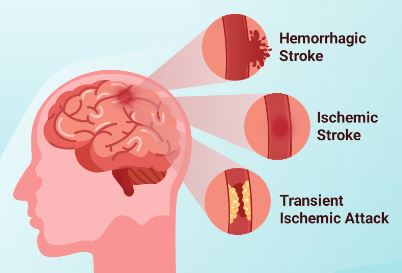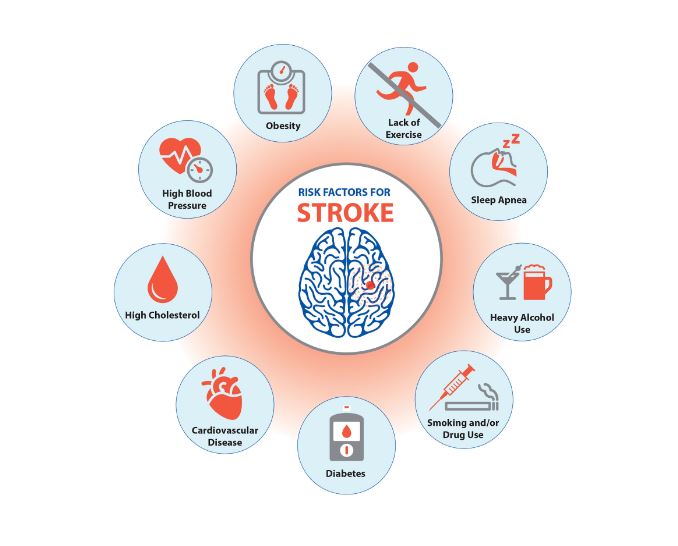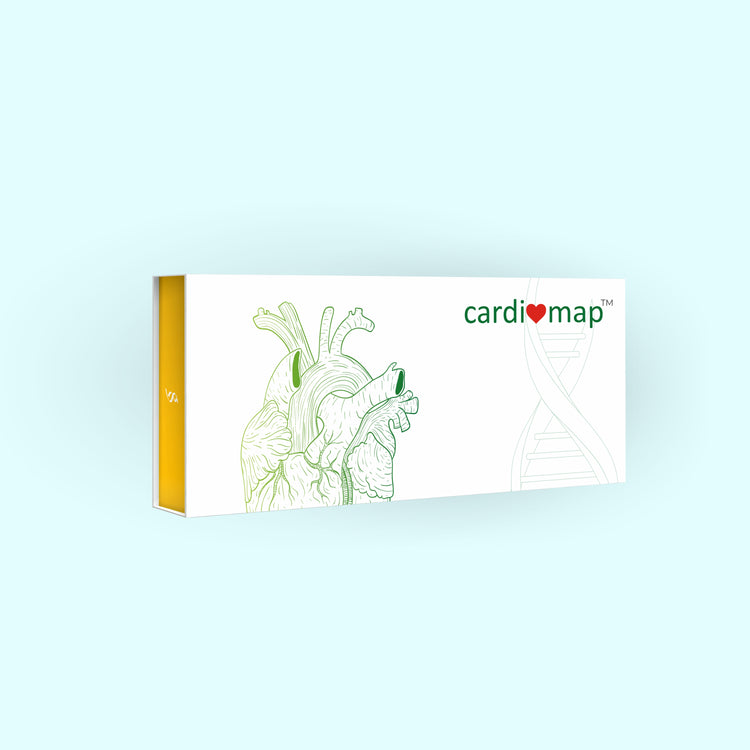Understanding Genetics Of Stroke
Oct 29, 2022
2182 Views
A stroke also known as a brain attack occurs when the blood vessel that carries oxygen and nutrients for the brain is either blocked due to a clot or a blood vessel in the brain bursts (if any rupture). It can occur in any region of the brain, spinal cord, and retina of the eye.
Studies have pointed out that stroke is the second leading cause of death and a major disability worldwide. Moreover, cases of stroke are now common among young people in low-and middle-income countries.
After coronary heart disease and cancers, stroke is the third leading cause of death and disability in India. A stroke occurs every 40 seconds, and every four minutes someone dies of a stroke. More than half of all strokes in India can be attributed to hypertension
Types Of Strokes
Stroke is of three types:
Ischemic strokes:
This is caused by blockage of an artery (or, in rare instances, a vein). About 87% of all strokes are ischemic. There are two types of ischemic stroke:
- Thrombotic strokes-
These are caused by a blood clot that develops in the blood vessels inside the brain. - Embolic strokes-
These are caused by a blood clot or plaque debris that forms elsewhere in the body and then travels to one of the blood vessels in the brain through the bloodstream.
Hemorrhagic stroke occurs when a blood vessel that supplies the brain ruptures and bleeds. There are two types of hemorrhagic stroke.
- Intracerebral hemorrhage-
Bleeding is from the blood vessels within the brain. - Subarachnoid hemorrhage-
Bleeding is in the subarachnoid space (the space between the brain and the membranes that cover the brain).
Transient ischemic stroke is known as the warning or the mini-stroke which temporarily blocks blood flow to the brain. The symptoms and the blood clots stay for a shorter period of time.
Signs And Symptoms:
Do observe for the F.A.S.T warning signs to spot a stroke. FAST is an acronym that can help you quickly recognise the warning signs and symptoms of a stroke. F for Face Drooping, A for Arm Weakness, S for Speech difficulty, and T for Time to call for an emergency.

Also, watch for other stroke symptoms:
- NUMBNESS or weakness of face, arm, or leg, especially on one side of the body
- CONFUSION, trouble speaking or understanding speech
- TROUBLE SEEING in one or both eyes
- TROUBLE WALKING, dizziness, loss of balance or coordination
- SEVERE HEADACHE with no known cause.
Causes Of Stroke
The risk factors are divided into two types: modifiable and non-modifiable. The modifiable types are regulated by medicine or changing habits. The non-modifiable types cannot be changed that includes age, family history of stroke, etc.
Modifiable risk factors:
- Dietary
- Metabolic
- Hypertension
- Microbial
- Ischemic heart diseases
- Environmental
Non-Modifiable risk factors:
- Age
- Gender
- Race
- Genetics
How Is Stroke Diagnosed?
Determining the type of stroke is significant in identifying proper treatment. In the emergency room, the stroke emergency team may ask for
- When the symptoms of the stroke started. This is critical in determining what treatment is best.
- Ask about medical history
- Perform a physical and neurological examination
- Have certain lab tests done
- Perform a CT or MRI which helps in understanding the type of stroke.
The common tests for stroke include
- Computerized tomography (CT) scan.
- Lab blood tests (looking for signs of infections or heart damage, checking clotting ability and blood sugar levels, testing how well kidneys and liver function, etc.).
- Electrocardiogram (abbreviated ECG or EKG) to make sure that a heart issue isn’t the source of the problem.
- Magnetic resonance imaging (MRI) scans.
- Electroencephalogram (EEG), though less common, can rule out seizures or related problems.
Treatment For Stroke
The medications and treatments vary depending on the type of stroke and how soon a person receives treatment after the stroke. There are also long-term treatments for stroke.
Some examples of treatments for stroke are as follows:
| Ischemic Stroke | Hemorrhagic Stroke |
| Thrombolytic drugs (within three to four and a half hours). | Blood pressure control. |
| Thrombectomy (within 24 hours if there’s no significant brain damage). | Reversal of any medication that might increase bleeding. |
| Blood pressure control. | Use of medications or surgery to reduce pressure inside your skull. |
Prevention:
80% of strokes are preventable. Know the risk factors and you can control, treat and recover. CDC (centre for disease control and prevention) says that strokes could be prevented through healthy lifestyle changes and working with the healthcare team to control factors contributing to the risk for stroke.
Understanding your genetic predisposition is one such way. Mapmygenome’s Genompatri helps in identifying any risk of stroke in an individual. This DNA-based health solution gives you a comprehensive assessment of your genetic predisposition to any health condition and correlates it with your and your family’s health history. With the help of a genetic counsellor, you can chalk out a health plan to prevent the risk of stroke.



